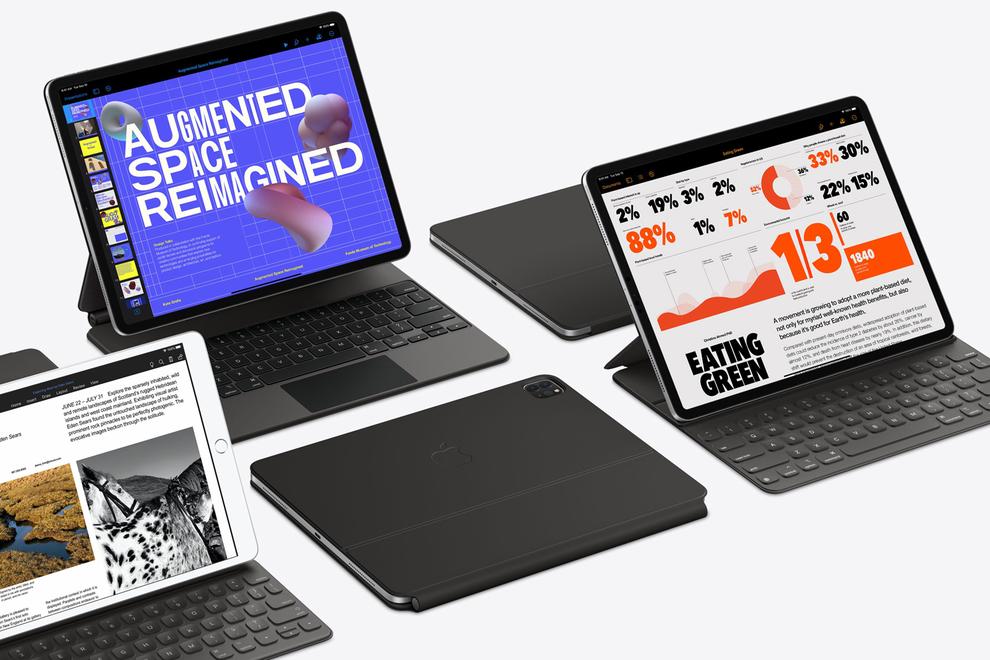Trackpad support has changed the iPad but old habits die hard
- 26 May, 2020 16:58

With iPadOS 13.4 Apple unexpectedly added mouse and trackpad support to the iPad, complete with on-screen cursor. It already existed to an extent as an accessibility setting, but Apple flipped the switch on full compatibility with any Bluetooth or wired peripheral and even released the Magic Keyboard with a trackpad for the iPad Prov.
It’s the latter I’ve been testing with a 12.9-inch iPad Pro and I have some feelings - mostly good feelings but with a fair few caveats.
Track changes
Firstly, a physical trackpad making its way to an official Apple iPad keyboard is quite something. The iPad is a touch-first computer aside from the occasional dalliance with an Apple Pencil, surely? The entire interface is designed to be an Internet slate, something for reading and Netflix when your phone isn’t large enough to satisfy your media-hungry peepers.
But gradually the iPad got thinner and more capable and a few people wondered if the tablet could do most of the things a laptop could do. It’s also easy to forget that the very first iPad from 2010 was released alongside a first party keyboard dock where the iPad was held in portrait mode via the old 30-pin connector. Even then, Apple couldn’t quite bring itself to release a large-screened computer without a keyboard accessory.
 Credit: Apple
Credit: Apple Skip ahead ten years and the Magic Keyboard represents a decade of evolution, even though some will see the addition of the trackpad as reductive. You no longer have to touch the iPad’s display.
This allows us to skip immediately to the “why not just use a laptop?” argument. With a trackpad and keyboard attached to a large iPad, it does indeed function much like a MacBook for word processing, web browsing and emailing.
The circular cursor flies around the display mimicking your pudgy pad of finger skin that normally interacts with the OS’s elements. Delightfully, the cursor morphs to select UI elements, app icons, buttons and more to show you that you can interact with them. It’s an excellent touch and one that takes the guesswork out of the new system. As it stands, some third party apps will need to catch up such as Microsoft Word, which does not yet recognise the cursor for text selection.
 Credit: Henry Burrell
Credit: Henry Burrell There are alternatives. The Brydge Pro Plus has a trackpad and is cheaper but crucially doesn’t support multi-touch gestures and is only a cursor. This makes the whole experience more frustrating than having no trackpad at all.
Bulk order
If you’ve been hankering for a laptop experience on your iPad though then the Magic Keyboard is the real deal, but adds quite the bulk to the set up and quite the dent to your bank account with its $589 price ($499 for the smaller 11in one).
This is a chunkier, heavier keyboard than the Smart Keyboard Folio, but it has much better backlit keys with actual travel and, of course, the trackpad. Yet I’ve missed not being able to fold the keyboard back completely when not in use, as the Magic’s design doesn’t allow for it.
 Credit: Apple
Credit: Apple Despite this, I have come to love the flexibility of the set up. The floating cantilever design isn’t just there to look cool (subjective, but come on, it does), it’s also so you can grab the bottom of the iPad and detach it from the keyboard’s magnetic clutches and take it away. In this way, it’s embracing the modularity of the iPad’s setup by expecting to sit on a desk or lap to be typed with before being torn in two, the iPad toddling off for a drawing session with the Apple Pencil or a download of the day’s newspaper.
You are the barrier, not the iPad
Gesture control on the trackpad makes multitasking and switching between apps faster than constantly reaching for the display, but there are still the same obstacles to adopting iPadOS as before if you’re used to macOS. My millennial brain still yearns for Finder and a file system, and I need to learn to embrace the cloud for flexible working between devices rather than just for backups.
 Credit: Henry Burrell
Credit: Henry Burrell I have to find images online every day and crop them to the right size for various websites and my workflow on desktop is honed and based around saving images and then opening in Photoshop. Trying to do that on the iPad is alien to me, and I’ve had to work out a different way to do it. It works, and the trackpad is a huge help, but has meant doggedly persisting with a method that takes me twice as long and swear a lot.
It’s best to go for what you’re attracted to rather than getting involved in the iPad vs MacBook debate, and investing your computing future in iPad is easier if you have disposable income to play with. I would probably still use two grand (if I had it to spare) to get a MacBook Air, but I want the iPad to change my mind as I love the form factor, modularity, 4G and performance.
Time to put my laptop in the cupboard and force myself to test the iPad’s – or my patience’s – limits.





